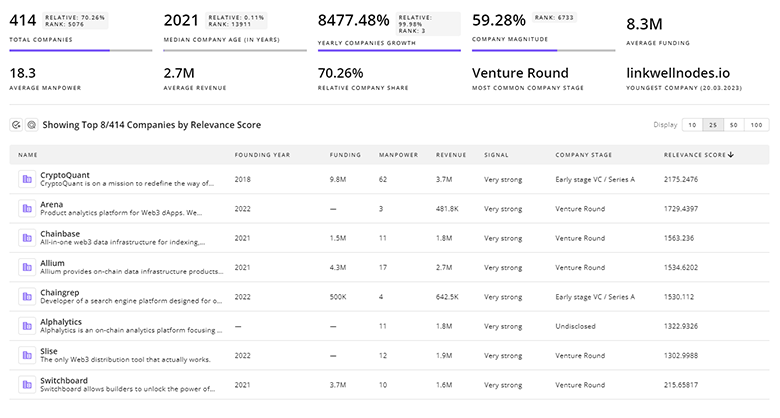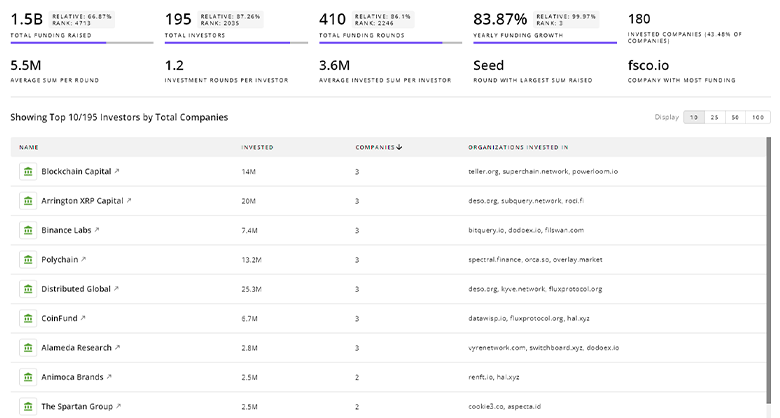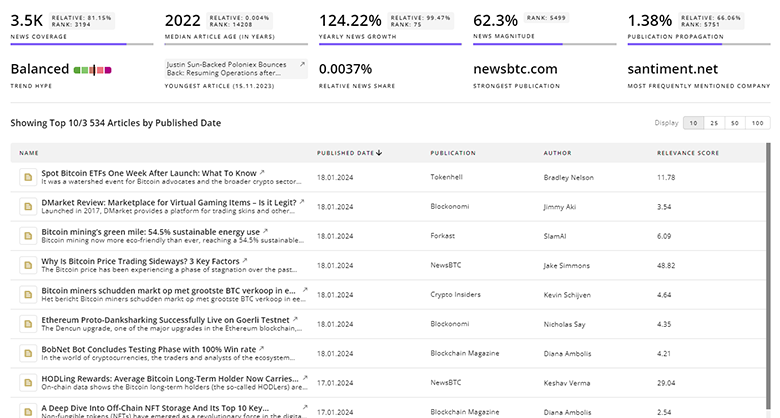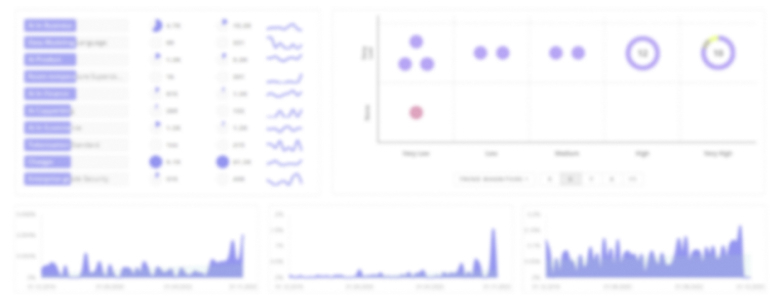
Database Management Report
: Analysis on the Market, Trends, and TechnologiesThe database management market is shifting from maintenance to strategic infrastructure: projected at USD 124.291 billion in 2025 with an 8.24% CAGR to 2030, vendors and buyers now prioritize managed cloud services, real-time analytics, and stronger governance to convert scale into measurable business outcomes.
We updated this report 64 days ago. Noticed something’s off? Let’s make it right together — reach out!
Topic Dominance Index of Database Management
The Topic Dominance Index trendline combines the share of voice distributions of Database Management from 3 data sources: published articles, founded companies, and global search
Key Activities and Applications
- Operational transaction processing (OLTP) for e-commerce, payments, and fintech — enterprises require ACID guarantees with sub-millisecond tail latency for global transactions; this remains a primary revenue driver for relational systems and NewSQL adopters Worldwide Database Management Systems Software 2023–2027.
- Database-as-a-Service (DBaaS) and managed operations — cloud-managed DBs reduce operational overhead and accelerate deployments; DBaaS now captures a large share of enterprise spending and enables serverless consumption models Database Management System Market - Forecasts from 2025 to 2030.
- Real-time analytics and streaming ingestion — continuous views, streaming SQL, and HTAP patterns power fraud detection, personalization, and operational dashboards Worldwide Database Management Systems Software Market Shares, 2023.
- Data governance, compliance, and immutable audit trails — regulatory requirements and enterprise risk management push investments in lineage, retention automation, and tamper-evident storage
- Master data management and unified feature stores for ML — MDM and feature-store patterns consolidate canonical entities and enable reliable model training and inference across stacks.
- Cloud migration, modernization, and schema transformation services — large-scale reengineering remains a frequent project (legacy → cloud/DBaaS), requiring tooling for schema conversion, data validation, and cutover Database Management Platform Market Report 2024.
Emergent Trends and Core Insights
- DBaaS and cloud-managed spend continues to scale; Research shows cloud deployments and DBaaS are the dominant procurement pattern as organizations trade capital expenditure for operational elasticity and faster time to value
- Multi-model and HTAP adoption accelerates — buyers favor engines that support relational, document, graph, and time-series access in a unified engine to avoid proliferation of point solutions and reduce integration cost
- NewSQL and distributed ACID systems gain footholds in fintech and global commerce — these systems combine transactional consistency with geo-distribution to address regulatory and latency constraints
- NoSQL and specialized stores keep strong growth rates for schema agility and scale in web, mobile, and IoT use cases; enterprises often adopt polyglot persistence for workload fit rather than wholesale replacement of RDBMS
- AI/ML embedded in operations — vendors and third-party tools now ship autonomous DB tuning, index recommendation, anomaly detection, and automated corrective actions to offset shrinking DBA staffs Worldwide Database Administration and Development Tools 2022–2026.
- Data governance becomes table stakes — as generative AI and regulated data use expand, enterprises prioritize cataloging, lineage, and rights management before broad model training or cross-system analytics
- Regional demand is bifurcated: Asia-Pacific shows higher adoption velocity and growth potential while North America remains the largest revenue market, creating geographic go-to-market choices for vendors
Technologies and Methodologies
- Serverless and consumption-based DBaaS models — minimize idle cost for variable workloads and support event-driven architectures
- Multi-model engines and polyglot persistence — consolidate entities and queries (SQL + document + graph + time-series) to reduce integration overhead and enable richer analytics
- AI-driven autonomous operations (indexing, query tuning, anomaly detection) — applied both in managed services and as embedded DB capabilities to offset DBA shortages
- Immutable/time-travel storage and versioned datasets — enable auditable retention, rollback, and reproducible ML pipelines; lakehouse patterns combine object storage economies with analytical performance
- Real-time materialized views and streaming SQL — reduce batch ETL costs and deliver live insights for operational decision systems
- DevOps and GitOps for databases — automated schema change pipelines, migration orchestration, and policy gating to improve reliability of production changes
- Zero-trust data access, fine-grained masking, and automated compliance workflows — integrated into DB platforms to reduce audit friction and accelerate regulated deployments
Database Management Funding
A total of 202 Database Management companies have received funding.
Overall, Database Management companies have raised $4.4B.
Companies within the Database Management domain have secured capital from 516 funding rounds.
The chart shows the funding trendline of Database Management companies over the last 5 years
Database Management Companies
- MariaDB — an open-source relational engine positioning toward cloud and managed offerings; MariaDB's SkySQL and HeatWave-like efforts target customers who need cost-efficient, SQL-compatible analytics and operational workloads with familiar tooling and migration paths.
- Altibase — hybrid in-memory plus disk engine that targets latency-sensitive applications in finance and telecom; Altibase's architecture suits workloads that need both sub-millisecond reads and durable large-volume storage while reducing the need for separate caching tiers Company Landscape Report.
- DuckDB — an in-process analytical SQL engine optimized for modern file formats and local analytics; DuckDB helps data scientists run fast, ad-hoc queries on parquet/CSV without moving data to a remote warehouse, lowering experimentation friction and cost.
- DbSchema — visual schema and design tooling that streamlines collaboration between developers and DBAs, with support for SQL and NoSQL targets; DbSchema reduces schema drift during cloud migrations and helps teams validate changes before production rollout.
- Bytebase — a database change-management and DevSecOps platform focused on safe schema migrations and access control across heterogeneous environments; Bytebase addresses the operational gap in multi-database CI/CD and provides audit trails for regulatory reporting
(Each company entry above links the vendor homepage and is supported by the available internal landscape and market reporting cited inline.)
Gain a better understanding of 4.7K companies that drive Database Management, how mature and well-funded these companies are.

4.7K Database Management Companies
Discover Database Management Companies, their Funding, Manpower, Revenues, Stages, and much more
Database Management Investors
Gain insights into 741 Database Management investors and investment deals. TrendFeedr’s investors tool presents an overview of investment trends and activities, helping create better investment strategies and partnerships.

741 Database Management Investors
Discover Database Management Investors, Funding Rounds, Invested Amounts, and Funding Growth
Database Management News
Gain a competitive advantage with access to 3.7K Database Management articles with TrendFeedr's News feature. The tool offers an extensive database of articles covering recent trends and past events in Database Management. This enables innovators and market leaders to make well-informed fact-based decisions.

3.7K Database Management News Articles
Discover Latest Database Management Articles, News Magnitude, Publication Propagation, Yearly Growth, and Strongest Publications
Executive Summary
Critical findings for business leaders: (1) treat the database layer as a product — select platforms that minimize operational overhead while enforcing governance; (2) prioritize DBaaS and multi-model engines where workload consolidation reduces integration cost; (3) invest in automated change pipelines and AI-assisted operations to offset DBA scarcity; and (4) factor regional regulatory and latency requirements into architecture choices. Strategic winners will combine strong data governance, multi-workload support, and low operational friction to serve both developers and compliance teams.
We seek partnerships with industry experts to deliver actionable insights into trends and tech. Interested? Let us know!








